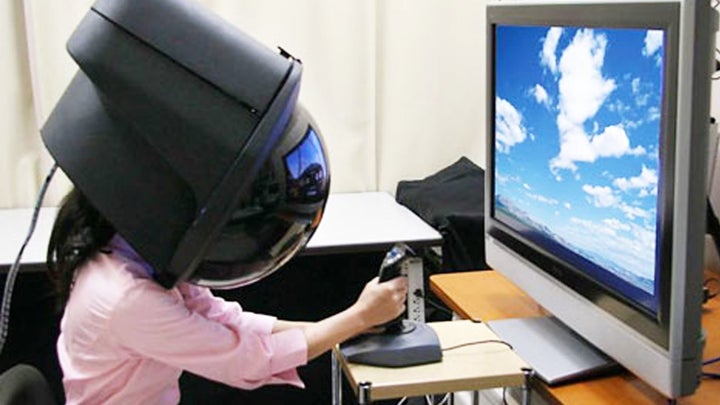
I remember my first virtual reality experience as if it were yesterday. It was 1991 and I was with my dad at a mall somewhere in Westchester, just north of the city. In the mall, a gaming store that we always hit to check out the latest and greatest from Nintendo was having a showcase of Virtually VR’s Dactyl Nightmare, a Player vs’ Player VR game that touted all of the early 90’s best polygon graphics.
For a whopping 20 bucks (that’s $35 and change in today’s money) I was led into a huge bulky circular contraption and had a massive headgear piece placed on me. As primitive as Dactyl Nightmare may look by today’s standards, the experience was pretty darn cool.
You entered this huge contraption, picked up your controller and got to move around the virtual arena all the while dodging the other person’s attacks and making sure you didn’t get snatched up by the big green flying pterodactyl. Fast forward 25 years and it finally looks like this type of gaming experience is at our doorstep.
Thing is though, good experiences on today’s premium VR headsets are games. There are no utility applications, there’s nothing that creates any kind of long term value for the user. Sure you have 360 videos, nifty short experiences that teleport you wherever they were shot, but quality wise they leave a lot to be desired: you don’t get to walk around, just look around, and they get boring a few minutes in, and you can get the same experience on your Apple TV which costs around $150.
Which brings me to my next point. Price. Oculus Rift will set you back $600 and you’ll need computer hardware that will cost another $600 if you assemble it yourself, or for the less technology adept of us, at least a $1000. A purchase hard to justify when a new, better than average, non-Apple laptop costs the same as a VR headset.
This will impact VR’s market penetration, since application development for a platform is driven by the customer demand the question then becomes - “Will brands spend millions to develop digital products for VR?” Not initially, at least not until there’s a large enough install base to justify the capital expenditure.
Now you’ve got people saying that VR is slated to be a 20 billion market by 2020. Maybe, when it’s done well it’s super cool. Others are saying that VR’s addressable market is the same as it was for mobile phones. Wishful thinking.
Phones live in pockets. VR headsets live next to your desktop computer, and I honestly can’t see your run of the mill folks carrying their Samsung VR headsets around everywhere or wearing them in the subway. Glasshole anyone? VRhole?
For the moment though it’s more than just cost and a lack of applications holding VR back. If you look at early low cost VR experiences for your phone like the Google Cardboard, they’re fun for about 5 minutes, but a few moments in and you’re fighting back feelings of nausea, this is called Virtual Reality Sickness, and is very real. The problem isn’t unique to Google Cardboard, the same phenomenon exists with premium products like the Oculus Rift, HTC Vive and Samsung Gear VR as well. Proponents of VR state that all this goes away after a few days in the virtual world, but how many people will realistically subjugate themselves to systematic bouts of nausea in order to have a new and novel experience? No.
So with all this holding VR back, are Facebook, Google, HTC investing in a flop? No.
Being able to strap on a headset, jump into a Virtuix Omni, a VR treadmill, and go for a run in a land where “there be dragons” flying overhead is quite frankly amazing. And while the wealth of software that will make VR world changing isn’t here yet, it will come, and when you tie VR in with 3rd party peripherals like the Virtuix, you’re opening a world of possibilities for brand experiences and digital products. For now though, those experiences will still need to be bespoke.
